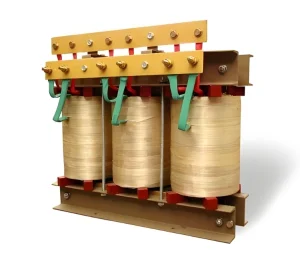
Introduction
Importance of Wire Configurations in Transformer Performance
Wire configurations for transformer windings play a pivotal role in determining the efficiency, reliability, and overall performance of transformers. The arrangement and design of wires within transformer windings directly impact key operational aspects such as energy efficiency, voltage regulation, and thermal management. By optimizing wire configurations, manufacturers can enhance the transformer’s ability to transmit electricity effectively while minimizing losses and ensuring longevity.
Understanding Wire Configurations
Definition and Significance of Wire Configurations in Transformer Windings
Wire configurations refer to the arrangement and layout of conductive wires within transformer windings. This crucial aspect of transformer design encompasses various factors such as the number of turns, winding patterns, and conductor materials. The significance of wire configurations lies in their direct influence on the electrical performance and operational characteristics of transformers. By determining the path and distribution of electrical currents, wire configurations play a fundamental role in achieving desired voltage transformation ratios, minimizing losses, and ensuring optimal energy transfer efficiency.
Discussion on the Impact of Wire Layouts on Transformer Efficiency and Reliability
The layout of wires within transformer windings significantly affects both the efficiency and reliability of the transformer. Different wire configurations can result in varying levels of electrical losses, including resistive losses and eddy current losses. Additionally, the choice of wire layout influences factors such as electromagnetic interference, thermal management, and mechanical stress distribution. By carefully selecting and optimizing wire configurations, engineers can improve transformer efficiency, reduce energy wastage, and enhance overall reliability, leading to cost savings and extended operational lifespan.
Types of Wire Configurations
Examination of Different Wire Configurations Commonly Used in Transformer Windings
Transformer windings can be implemented using various wire configurations, each with its unique characteristics and applications. Common types include concentric windings, layer windings, and helical windings. Concentric windings involve multiple layers of wire wrapped around a central core, while layer windings feature individual layers of wire wound one atop another. Helical windings, on the other hand, utilize a spiral arrangement of wire around the core. Understanding the distinctions between these configurations is essential for selecting the most suitable design based on specific transformer requirements.
Analysis of the Advantages and Limitations of Each Wire Configuration Type
Concentric Windings:
- Advantages:
- Simplified construction process.
- Enhanced thermal conductivity due to uniform heat dissipation.
- Reduced risk of electrical insulation damage.
- Limitations:
- Limited flexibility in design variations.
- Increased risk of high-voltage breakdown between layers.
- Challenges in achieving precise winding geometry for high-frequency applications.
- Advantages:
Layer Windings:
- Advantages:
- Flexibility in design configurations, allowing for precise voltage regulation.
- Improved resistance to electrical stresses and mechanical vibrations.
- Ease of manufacturing and repair.
- Limitations:
- Higher susceptibility to electromagnetic interference (EMI).
- Potential for uneven distribution of magnetic flux, leading to increased losses.
- Limited scalability for large-scale transformers due to space constraints.
- Advantages:
Helical Windings:
- Advantages:
- Enhanced resistance to axial and radial forces, suitable for high-vibration environments.
- Reduced leakage inductance, leading to improved efficiency.
- Potential for compact designs with higher power density.
- Limitations:
- Complex manufacturing process, requiring specialized winding equipment.
- Challenges in achieving precise winding geometry and insulation thickness.
- Limited suitability for certain transformer applications due to increased cost and complexity.
- Advantages:
By analyzing the advantages and limitations of each wire configuration type, engineers can make informed decisions when designing transformers, considering factors such as efficiency, reliability, cost-effectiveness, and specific application requirements.
Factors Influencing Optimal Configurations
Discussion on Factors to Consider When Selecting Optimal Wire Configurations
When selecting optimal wire configurations for transformer windings, several key factors must be carefully considered to ensure optimal performance and reliability. These factors include:
Voltage Rating and Load Capacity:
- The voltage rating of the transformer and its intended load capacity dictate the required insulation and conductor size, influencing the choice of wire configuration to maintain safe operation and prevent electrical breakdown.
Efficiency and Performance Requirements:
- Desired efficiency levels and performance metrics, such as voltage regulation and power losses, influence the selection of wire configurations optimized for minimal energy wastage and maximum electrical performance.
Size and Space Constraints:
- Physical size limitations and space constraints within the transformer enclosure impact the choice of wire configurations, necessitating designs that maximize power density while ensuring adequate insulation and cooling.
Thermal Considerations:
- Thermal management is critical in transformer design to prevent overheating and maintain operational stability. Wire configurations must facilitate efficient heat dissipation to avoid temperature rise and thermal degradation of insulation materials.
Cost and Manufacturing Feasibility:
- Considerations of manufacturing complexity, material costs, and production efficiency influence the selection of wire configurations that balance performance requirements with cost-effectiveness and manufacturability.
Examination of How Transformer Specifications and Application Requirements Influence the Choice of Wire Configurations
Transformer specifications and application requirements play a pivotal role in determining the most suitable wire configurations for a given application. Factors such as voltage class, frequency, power rating, and operating environment directly influence the choice of wire configurations:
Voltage Class:
- High-voltage transformers require robust insulation and precise winding arrangements to withstand elevated voltages and minimize the risk of electrical breakdown.
Frequency:
- Transformers operating at higher frequencies may require specialized wire configurations optimized for reduced eddy current losses and improved efficiency.
Power Rating:
- Transformers designed for different power ratings necessitate varying wire configurations to accommodate the required current-carrying capacity and minimize losses.
Operating Environment:
- Environmental factors such as temperature extremes, humidity levels, and exposure to vibration or mechanical stress influence the choice of wire configurations optimized for reliability and longevity under specific operating conditions.
By carefully considering these factors, engineers can select optimal wire configurations tailored to meet the unique specifications and application requirements of each transformer, ensuring optimal performance, efficiency, and reliability.